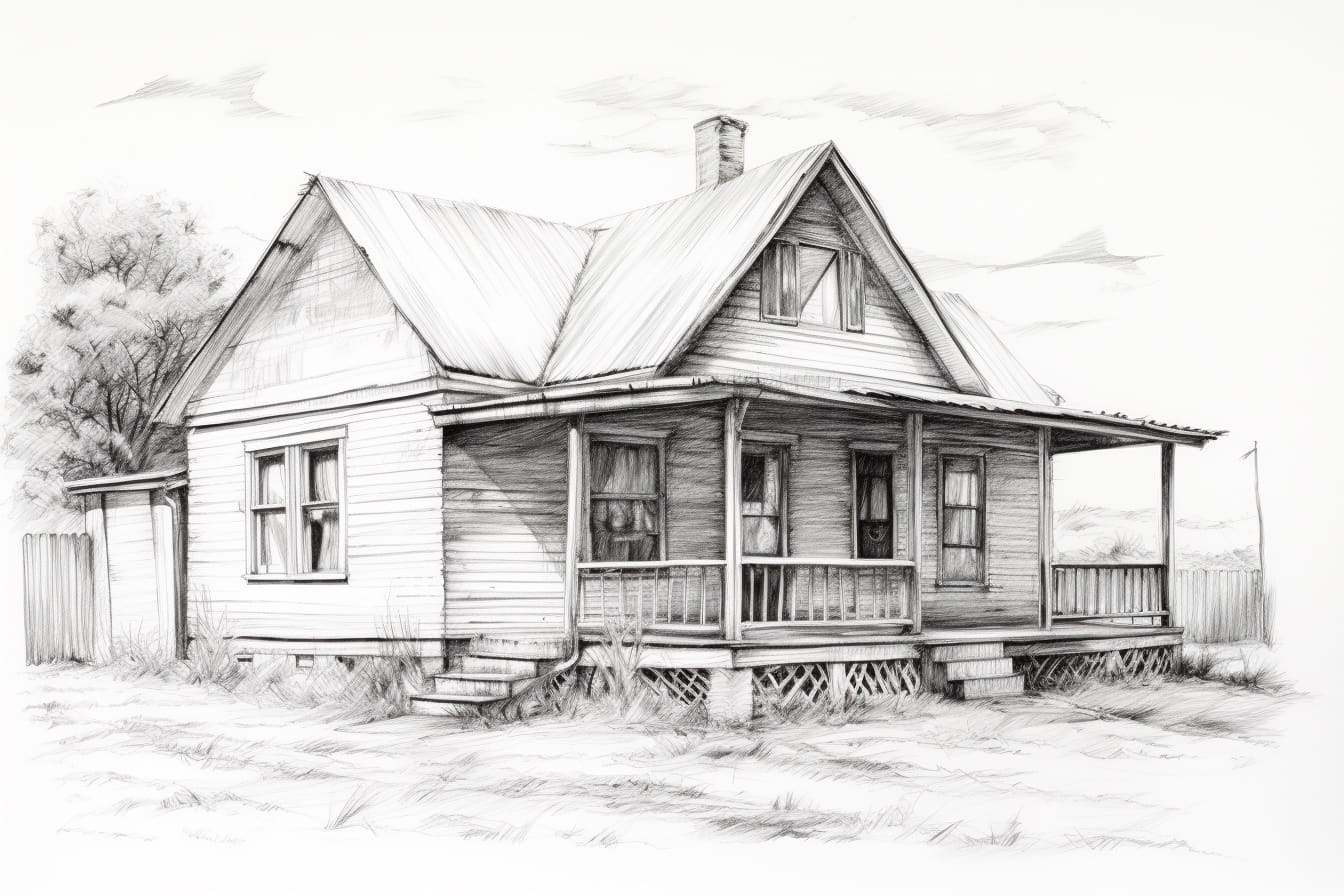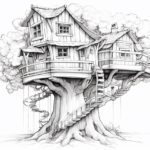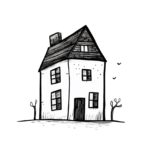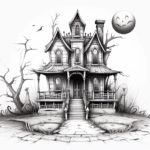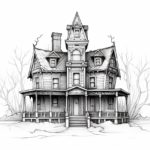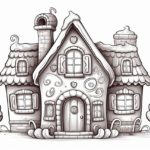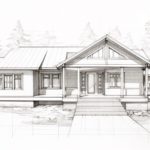Drawing an Old House can be a captivating and rewarding experience for any artist, novice or experienced. The weathered textures, intricate architectural details, and rich history of old houses offer a wealth of inspiration and challenges for artists to explore. From the crumbling bricks to the intricate woodwork, each element tells a story of the passage of time and human experiences. By capturing the unique character and charm of an old house through drawing, artists have the opportunity to preserve a moment in time and create a visual narrative that resonates with viewers. In this guide, we will delve into techniques and tips to help you bring the beauty and essence of an Old House to life on paper. So grab your sketchbook and pencils, and let’s embark on a creative journey to capture the allure of these architectural treasures through drawing.
Materials Required
To draw an old house, you will need the following materials:
- Paper: Choose a good quality drawing paper suitable for your chosen drawing medium.
- Pencils: A range of graphite pencils in different hardness for sketching and shading.
- Erasers: A kneaded eraser for lifting graphite and a white vinyl eraser for more precise erasing.
- Sharpener: To keep your pencils sharp for fine details.
- Drawing pens: Optional for adding details and outlines.
- Ruler: For straight lines and ensuring accurate proportions.
- Reference photo: A picture of an old house for inspiration and guidance.
- Drawing board: To provide a sturdy surface for drawing.
These materials will help you create a
How to Draw an Old House: a Step-by-step Guide
Step 1: Gather Your Materials
Start by gathering all the necessary materials for your drawing. You will need a pencil, eraser, drawing paper, ruler, and optional coloring tools such as colored pencils or markers.
Step 2: Sketch the Basic Shape of the Old House
Begin by lightly sketching the basic shape of the old house using your pencil. Focus on the overall structure of the house, including the roof, windows, doors, and any unique architectural features.
Step 3: Add Details to the Old House
Next, add more details to your drawing by including elements such as shingles on the roof, bricks or siding on the walls, and any decorative elements like shutters or trim. Take your time to capture the character of the old house.
Step 4: Refine the Details and Textures
Once you have the basic structure and details in place, go back and refine the details further. Pay attention to the textures of different materials, such as the roughness of the bricks or the smoothness of the windows.
Step 5: Add Surrounding Elements
Consider adding elements around the old house to give it context, such as trees, a fence, or a pathway. This will help create a more complete and realistic scene.
Step 6: Finalize Your Drawing
Once you are satisfied with the overall composition and details of your drawing, go over the lines with a darker pencil or ink to make them stand out. Erase any stray lines or smudges, and consider adding shading or coloring to enhance the depth and dimension of your old house drawing.
Step 7: Optional: Add Color
If you choose to add color to your drawing, use colored pencils, markers, or any other coloring tools to bring your old house to life. Pay attention to light and shadow to create a more realistic and visually appealing final piece.
Step 8: Reflect and Revise
Take a step back and evaluate your drawing. Make any necessary revisions or additions to refine your artwork further. Don’t be afraid to experiment and make changes until you are satisfied with the final result.
Step 9: Share Your Artwork
Finally, proudly display or share your finished old house drawing with others. Consider framing it, posting it online, or even entering it into an art competition to showcase your talent and creativity.
Conclusion
In conclusion, drawing an old house can be a rewarding experience that allows you to capture the unique charm and character of historical architecture. By following the steps outlined in this article and practicing your observation and shading skills, you can create a detailed and realistic representation of an old house that truly captures its essence. Remember to be patient with yourself and enjoy the process of bringing a piece of history to life on paper. Keep practicing and experimenting with different techniques to continue honing your drawing skills and capturing the beauty of old houses in your artwork.
Fun Facts About Old Houses
- Many old houses were built with materials that are no longer commonly used, such as horsehair plaster, lath and plaster walls, and hand-hewn beams.
- Some old houses have hidden rooms or secret passageways, often used for purposes such as hiding valuables or providing a means of escape during times of danger.
- Old houses often have unique architectural features that are no longer seen in modern construction, such as gingerbread trim, decorative corbels, or intricately carved moldings.
- It is not uncommon to find historical artifacts hidden within the walls or floors of old houses, such as newspapers from the past, old coins, or even letters and documents.
- Many old houses have interesting folklore or legends attached to them, such as stories of ghostly apparitions, buried treasure, or famous historical figures who may have lived in the home.
- Old houses were often designed with practicality and energy efficiency in mind, featuring features such as thick stone walls for insulation, strategically placed windows for natural light and ventilation, and large fireplaces for heating.
- The construction techniques used in old houses can reveal a lot about the time period in which they were built, such as the use of timber framing in colonial-era homes or the incorporation of Victorian-era decorative elements.
- Some old houses have been preserved or restored to their original condition, allowing visitors to step back in time and experience what life was like in a different era.
- Old houses often have a rich history and may have been witness to significant events or have been home to notable individuals, adding to their allure and charm.
- Renovating and restoring old houses can be a labor of love for homeowners, as they work to preserve the character and history of the home while making necessary updates for modern living.
Suggestions for Scenes and Settings for Old House Drawings
Absolutely, here are some ideas for scenes and settings for drawings of an old house:
- Overgrown Garden: Capture the charm of an old house with a neglected garden that has become overgrown with wildflowers, vines, and trees. Add in some rusty garden tools and a weathered bench for added authenticity.
- Twilight: Draw the old house at twilight, with the last rays of the sun casting long shadows and the lights inside the house starting to flicker on. This scene can evoke a sense of mystery and nostalgia.
- Winter Wonderland: Imagine the old house covered in a blanket of snow, with smoke curling from the chimney and icicles hanging from the eaves. Include a snowman in the front yard and some footprints in the snow for a touch of whimsy.
- Abandoned: Depict the old house as abandoned and forgotten, with boarded-up windows, broken shutters, and an overgrown yard. Add in some crows perched on the roof for a eerie touch.
- Seasonal Changes: Create a series of drawings showing the old house in different seasons. For example, you could draw the house surrounded by blooming flowers in spring, shaded by lush greenery in summer, adorned with colorful leaves in autumn, and covered in snow in winter.
- Vintage Car: Place a vintage car in front of the old house, with the hood propped open and tools scattered around as if someone is working on it. This scene can add a nostalgic touch and create a sense of a bygone era.
- Moonlit Night: Draw the old house under the light of a full moon, casting eerie shadows across the landscape. Include a few nocturnal animals like owls or bats to enhance the mystical atmosphere.
- Ocean View: Situate the old house near the coast, with crashing waves in the background and seagulls circling overhead. Include a weathered boat or a lighthouse in the distance to enhance the maritime theme.
- Foggy Morning: Capture the old house on a foggy morning, with mist swirling around the eaves and dewdrops clinging to the cobwebs. This scene can evoke a sense of tranquility and introspection.
- Magical Forest: Imagine the old house nestled deep in a magical forest, with towering trees, sparkling fairy lights, and whimsical creatures peeking out from behind the foliage. This setting can transport

